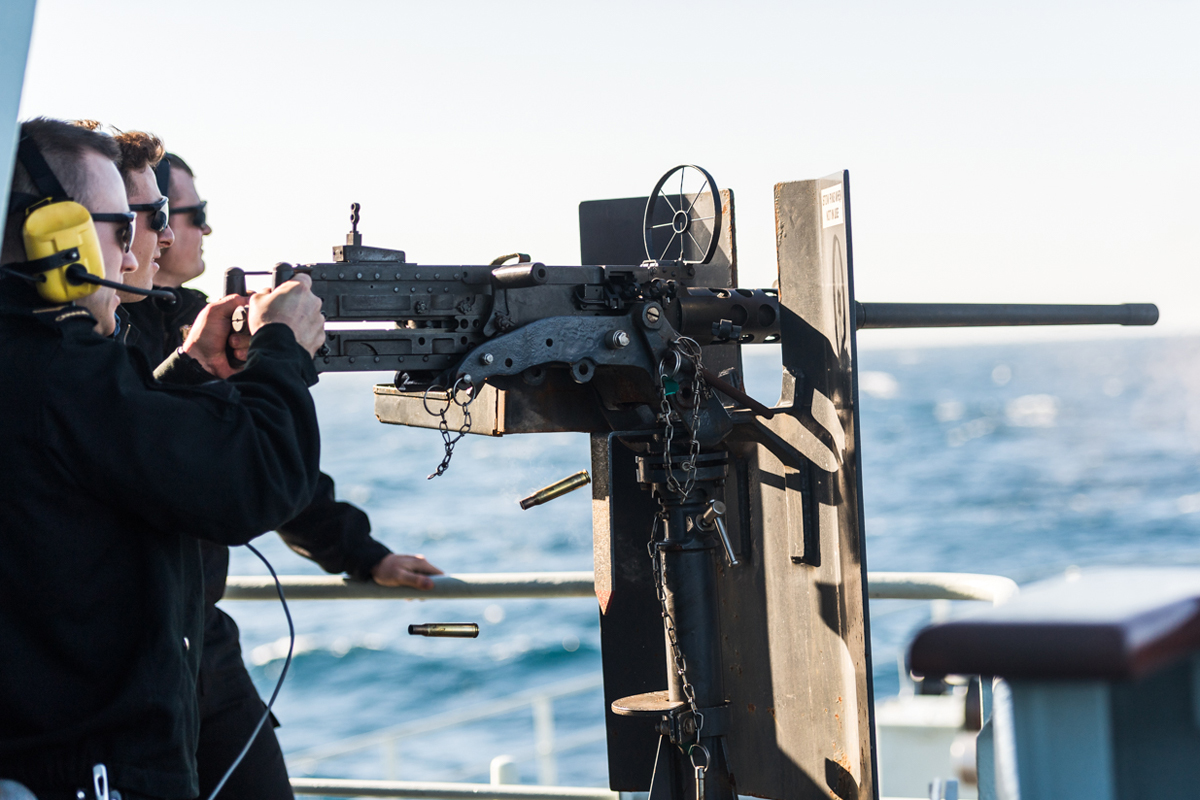Sea Trainers – Ensuring Readiness at Sea
By Lookout on Oct 22, 2018 with Comments 0
Captain Jenn Jackson, Op Caribbe PAO ~
The Red Hats
They are worn by Sea Readiness Trainers, and any sailor, or anyone who has been around sailors, has likely heard the significance of the red hat, and also expressed a hint of dread at their arrival.
The presence of Sea Readiness Trainers in HMCS Edmonton and HMCS Nanaimo makes for a busy time on the ships, which are set to start Operation Caribbe when they get to their area of operation; Op Caribbe is a bi-annual illicit drug interdiction operation.
The tempo of scheduled collective training is higher than normal and the frequency of unannounced team training and drills – such as damage control, casualty management, and force protection events – is even higher. So it means a lot of hard work, little sleep, and lots of learning in order to successfully achieve the objectives set by readiness training.
Readiness training can take many different forms depending on the mission or task for which the ship is being trained, such as high-readiness level or mission-specific force employment deployments such as the current training in Nanaimo and Edmonton. Sea Trainers provide the program, based on the Readiness Policy, which focuses on collective training designed to render the ship’s company into a cohesive and effective crew.
Preparation
What many people may not realize is the planning process for readiness training begins well before Sea Trainers embark. Once it is determined a ship requires the training, Sea Trainers plan and prepare ashore for a specific training program; that planning continues while embarked for the program. Sea Training staff dedicate months of work to ensure a program effectively exposes the crew to scenarios they may encounter at sea.
Input from the ship’s Commanding Officer aids in the planning and preparation process.
“Often, the Commanding Officer will identify keys areas for the development of their ship’s company that will then be incorporated into the readiness training program,” said Lieutenant-Commander Lisa Zezza, Executive Officer Patrol Vessel Sea Training (Pacific).
Patrol Vessel Sea Training is made up of eight Sea Trainers, each a subject matter expert in their own specialty that corresponds to an equivalent trade, occupation, or position in the ship.
“Sea trainers embark the ship to execute the well-thought out readiness training program, to mentor the crew, and to provide assessment feedback,” adds LCdr Zezza. “There is a considerable period of rapid growth that takes place during readiness training as the crew gels together and learns how to work as an effective and capable team.”
Execution
Executing a program onboard requires flexibility and planning for the embarked Sea Trainers. To ensure that readiness objectives are met, there are regular synchronization meetings to make adjustments as needed to the overall plan. Sea Trainers are often the first up in the morning and the last to go down at night, with little free time throughout the day as they monitor the ship’s scheduled collective training, including choreographing and coordinating the onset of the next unannounced event.
“Where possible, we phase the training and build intensity and complexity as the training period progresses. Readiness training programs begin with drills that review and reinforce basic individual skills, and build to scenarios that require more advanced and collective effort to overcome,” says LCdr Zezza.
Feedback
After every training event, the sea trainers discuss the crew’s response, noting observations on written critiques that are presented to the ship’s staff in order to effect necessary changes to their plans and processes, ultimately improving overall crew readiness.
“It’s a busy and intense period for us when we are embarked in a ship,” said LCdr Zezza. “When you see the teamwork that develops, the resulting advances in performance capability, and the overall increased proficiency to meet all the challenges that Sea Trainers present, we know that we have done our job in delivering the readiness training necessary to ensure that ship’s companies are ‘Ready to Help, Ready to Lead and Ready to Fight’.”
Filed Under: Top Stories
About the Author:






